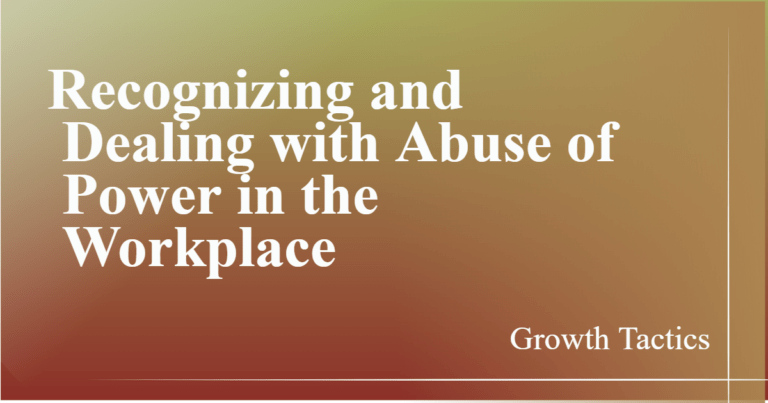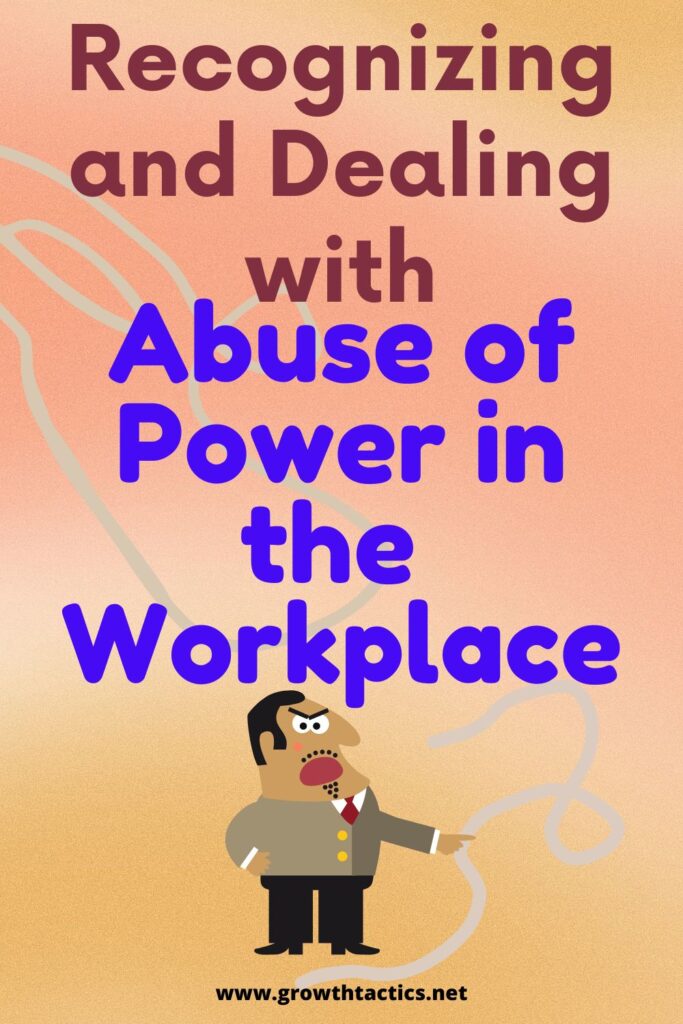Abuse of power in the workplace can ruin morale and lower productivity. I’ve witnessed many disturbing instances, from financial misuse to soliciting sexual favors for job perks. These issues are tough to tackle, but this guide aims to help. Here, you’ll find tips to identify abuse of power and steps to report the problem. Let’s make the work environment safer for everyone.
Jump To Section
Understanding Abuse of Power
Abuse of power takes many forms. At its core, it’s when someone in a position of power acts unethically. This can be your boss misusing company funds. It can be a supervisor asking for sexual favors. Abuse of power is always wrong, no matter how it manifests.
Impact on Employee Well-being
Abuse of power can cripple a workplace. It doesn’t just hurt the direct victims; it affects everyone:
- Morale drops
- Motivation suffers
- Productivity falls
- The work environment becomes toxic
- Employees feel isolated and stressed
- Higher turnover
- Lower overall satisfaction
We definitely don’t want these problems in our workplace. All these things are huge hits to the bottom line.
Identifying Abusive Behavior
Types of Power Abuse in the Workplace
Power abuse in the workplace can take many forms. Each type hurts individuals and the organization. Know these types so you can recognize them early.
1. Verbal Abuse
This includes yelling, insults, or harsh criticism. It demoralizes employees. It creates a hostile environment. If someone frequently shouts or belittles others, verbal abuse is likely at play.
2. Sexual Harassment
Unwanted sexual advances or comments qualify as sexual harassment. It can be explicit or subtle. This behavior makes the workplace unsafe and uncomfortable. Victims may feel ashamed or frightened.
3. Intimidation
Using threats to control others is intimidation. This can involve threatening job loss or demotion. It creates fear and anxiety in employees. Intimidation makes people feel powerless.
4. Discrimination
Discriminatory abuse targets race, gender, age, or religion. It involves unfair treatment and bias. Employees facing discrimination feel left out and undervalued. It’s illegal and unethical.
5. Exploitation
This occurs when a person in power takes unfair advantage of employees. Examples include making unreasonable demands or expecting unpaid overtime. Exploitation often goes unnoticed because it’s masked as “hard work.”
6. Isolation
Deliberately isolating someone from team activities or key meetings is another form of abuse. Isolation makes employees feel excluded and unimportant. This can severely affect their confidence and performance.
7. Financial Abuse
Misusing company funds or manipulating budgets for personal gain is financial abuse. This erodes trust. It can lead to severe financial losses for the company.
Knowing the types of power abuse is crucial. It helps you spot and tackle these issues head-on. Awareness is the first step toward a safer, more productive workplace. If you see these behaviors, take action. Speak up. Report it. Creating a healthy work environment benefits everyone.
Reporting and Handling Abuse
I know this can be tough. Every situation is different. But often, the only way to end the abuse of power is to report it. Reporting abuse is crucial for change. It creates a record and forces the organization to take action.
Steps to Take When Facing Workplace Abuse
1. Document Everything
Keep a detailed record of each incident. Note the dates, times, locations, and descriptions of the events. Save any emails, messages, or documents related to the abuse. This evidence can be crucial in substantiating your claims and ensuring that HR takes your report seriously.
2. Report to HR
Go to your Human Resources department and share your documentation. Be clear and stick to the facts. Explain how the abuse is affecting you and your work. HR is there to address these issues, so don’t hesitate to approach them.
3. Follow Up
After you have reported the abuse, make sure to follow up with HR. Check on the progress of the investigation and any actions being taken. Regular communication with HR can ensure that your report is not forgotten and that appropriate steps are being taken.
4. Seek Support
Talk to trusted colleagues, friends, or family members about what you are experiencing. Emotional support is crucial during these times. You do not need to go through this alone, and speaking about your experiences can also help validate your feelings.
5. Know Your Rights
Understand your legal rights. There are laws in place that protect employees from abuse and harassment. If necessary, consult a lawyer to learn more about your rights and the legal options available to you. It’s important to remember that you have protections under the law.
Role of HR in Addressing Abuse Allegations
HR plays a key role in addressing abuse allegations in the workplace. Their responsibilities include the following:
1. Investigate Thoroughly
HR should promptly and thoroughly investigate any claims of abuse. This involves speaking to all parties involved, gathering evidence, and ensuring that the investigation is unbiased. Thorough investigations are essential for getting to the truth.
2. Take Action
If the investigation confirms that abuse has occurred, HR must take appropriate action against the abuser. This could range from warnings to termination, depending on the severity of the abuse. It’s crucial that HR acts decisively to protect employees and prevent further incidents.
3. Maintain Confidentiality
HR should keep your report and related information confidential. They must respect your privacy and ensure that only those who need to know are informed. This helps protect you from retaliation and maintains trust in the HR process.
4. Support Victims
HR should offer support resources to victims of abuse. This could include access to counseling services, stress management programs, or legal advice. Ensuring that victims feel supported and safe is vital for their well-being.
5. Implement Policies
HR should enforce clear anti-abuse policies within the organization. This includes regular training for all employees on recognizing and preventing abuse. By fostering a culture of respect and accountability, HR can help prevent abuse from occurring in the first place.
Reporting abuse is challenging but necessary. By following these steps, you can take meaningful action to stop abuse in the workplace. HR has a duty to help you and to protect all employees. By standing up against abuse, you’re contributing to a safer and healthier work environment for everyone. Don’t hesitate to take these steps; your actions can make a significant difference.
Cultivating a Healthy Work Environment
Creating a healthy work environment is everyone’s responsibility, from the CEO down to the person in the mailroom. A positive workplace not only enhances employee well-being but also boosts productivity and job satisfaction. Here are some tips for employers to provide a healthy workplace:
Promoting Workplace Respect and Boundaries
1. Establish Clear Policies
Set up policies that promote respect and outline acceptable behaviors. Make sure these policies are well-communicated and easily accessible to all employees. Regular training sessions on respect and workplace etiquette can reinforce these guidelines.
2. Lead by Example
Leaders at all levels should model respectful behavior. When management demonstrates respect and adherence to boundaries, it sets a standard for the entire organization. This includes active listening, showing appreciation, and handling conflicts maturely.
3. Encourage Open Communication
Create an atmosphere where employees feel comfortable voicing their concerns and suggestions. Encourage open communication through regular team meetings, anonymous suggestion boxes, and periodic surveys. Transparency builds trust and respect.
4. Provide Training
Invest in training programs focused on diversity, respect, workplace bullying, and anti-harassment policies. Equip employees with the skills to interact positively with colleagues, understand boundaries, and recognize inappropriate behavior.
Fostering Employee Empowerment and Morale
1. Recognize Achievements
Regularly acknowledge and reward employees’ efforts and achievements. Public recognition, awards, or even a simple thank-you note can go a long way in boosting morale.
2. Offer Opportunities for Growth
Provide opportunities for professional development and career advancement. This could include workshops, mentorship programs, and access to online courses. When employees see paths for growth, their engagement and motivation increase.
3. Foster Team Collaboration
Encourage teamwork and collaboration through group projects, team-building activities, and collaborative tools. A supportive team environment fosters a sense of belonging and shared purpose.
4. Prioritize Work-Life Balance
Encourage a healthy work-life balance by offering flexible working hours, remote work options, and adequate time off. Respecting employees’ time outside of work shows that you value their well-being.
Preventing Power Abuse Through Awareness
1. Education and Training
Conduct regular training sessions to raise awareness about power dynamics and abuse. Educate employees on recognizing signs of power abuse and understanding the impact it can have on individuals and the organization.
2. Clear Reporting Mechanisms
Ensure that there are clear and accessible mechanisms for reporting abuse. Employees should know whom to approach and what steps to take if they experience or witness abuse.
3. Zero Tolerance Policy
Implement a zero-tolerance policy towards abuse of power. Make it clear that such behavior will not be tolerated and outline the consequences for violators. This policy should be uniformly enforced, regardless of the offender’s position within the company.
4. Regular Reviews and Audits
Conduct regular reviews and audits of workplace culture and employee relations. This can help identify and address potential issues before they escalate into serious problems. Surveys, feedback sessions, and exit interviews can provide valuable insights.
Final Thoughts
Cultivating a healthy work environment is an ongoing effort that requires commitment from everyone in the organization. By promoting workplace respect and boundaries, fostering employee empowerment and morale, and preventing power abuse through awareness, companies can create a supportive and productive atmosphere where all employees can thrive. Such an environment not only benefits individuals but also drives the overall success of the organization.


